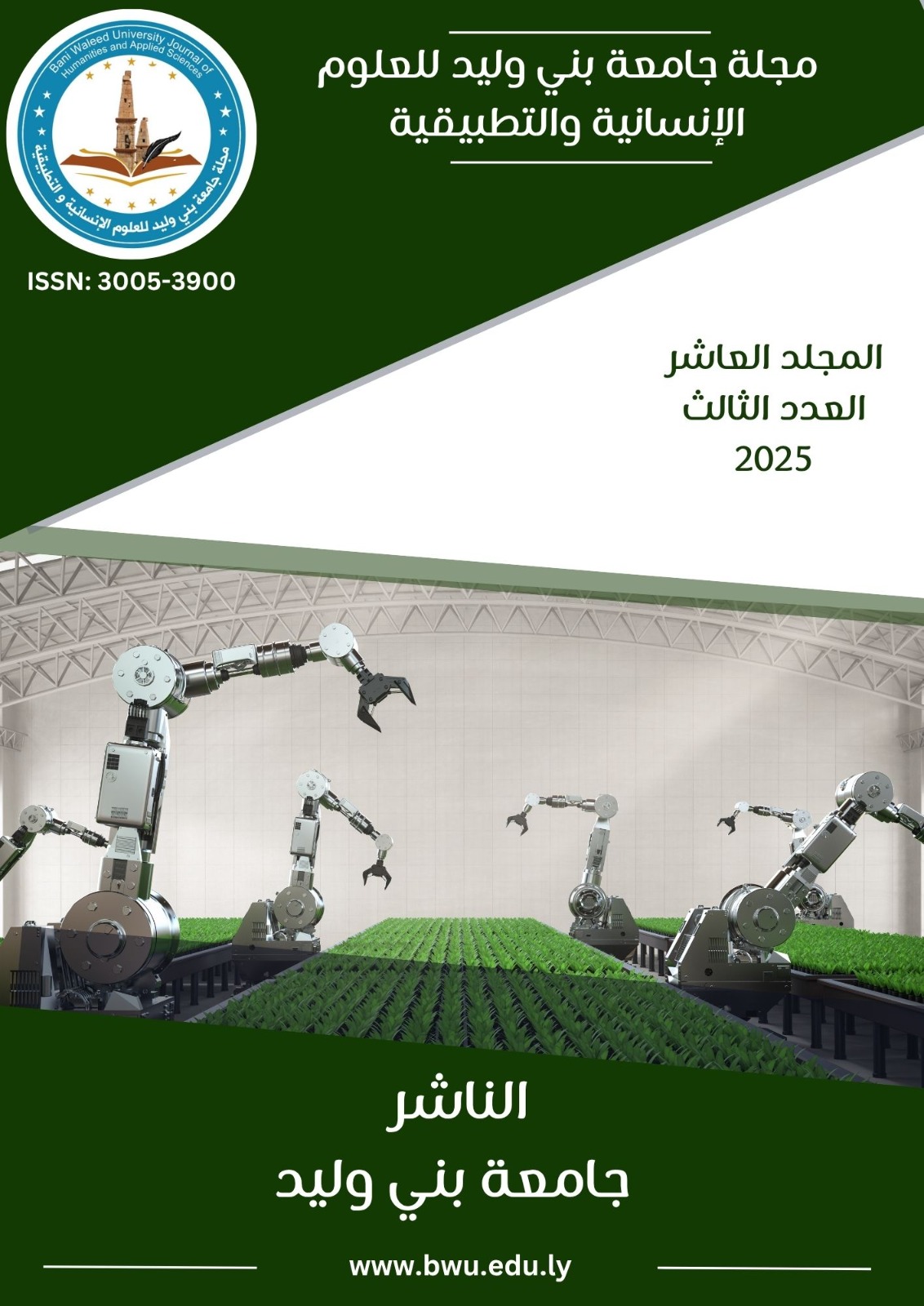Urban formation as a tool for controlling air and heat flows: Strategies for enhancing the climate resilience and well-being of cities
DOI:
https://doi.org/10.58916/jhas.v10i3.874الكلمات المفتاحية:
Urban formation، urban fabric، dynamic climates، climatic cities، old city of Tripoliالملخص
This research aims to analyze the role of urban form and fabric as effective tools for controlling the local microclimate within urban environments, particularly in regions characterized by dynamic climatic conditions. The study is grounded in a central hypothesis that traditional urban configurations—with their inherent spatial characteristics and flexible layouts—serve as intelligent, nature-based solutions for enhancing urban livability and addressing the challenges of climate change.
The research adopts a descriptive-analytical methodology, supported by a comparative case study analysis of the old city of Tripoli, as a traditional model from North Africa, alongside the historic city of Córdoba in Spain, representing a European urban center influenced by Arab Islamic architectural heritage. The findings reveal that the similarities in urban configuration strategies between the two cities played a pivotal role in enhancing natural ventilation and reducing surface temperatures, thereby improving thermal comfort for their inhabitants.
A review of recent scientific literature in the fields of urban physics and climatic design highlights the significance of compact, cohesive, and shaded urban fabrics in mitigating the adverse effects of urban heat islands. The study emphasizes that drawing inspiration from these traditional design principles and consciously integrating them into contemporary urban planning presents a promising pathway toward more resilient and livable cities.
Furthermore, the research clarifies the nuanced distinctions among three commonly interchanged terms in the field of planning and architecture, each carrying specific and precise implications that must be properly understood. It concludes by stressing the need to reassess traditional urban models not merely as cultural legacies, but as dynamic design systems capable of offering effective environmental solutions in the face of accelerating urbanization and climate change.
التنزيلات
المراجع
Taleghani, M., Tenpierik, M., & Dobbelsteen, A. van den. (2021). The impact of urban form on outdoor thermal comfort. Building and Environment, 204, 202–217.
Sharifi, A. (2019). Resilient urban forms: A review of planning strategies for climate adaptation. Cities, 85, 540–552.
النجار، م.(2017). أسس التخطيط العمراني، القاهرة : دار المعرفة العلمية.
بدران، ع. (2019). المورفولوجيا الحضرية: دراسة التطور العمراني. عمان: دار أسامة للنشر.
الخياط، س. (2020). النسيج العمراني والهوية المعمارية. الرياض: مركز البحوث العمرانية.
وزارة الإسكان. (2021). المبادئ التوجيهية للتطوير العمراني. المملكة العربية السعودية: المطبوعات الرسمية.
Fabbri, K. (2021). Urban morphology and outdoor thermal comfort: The role of the built environment in climate adaptation. Sustainability, 13(2), 114–130.
Yang, X., & Li, Y. (2020). Urban morphology and its impact on pedestrian thermal comfort. Sustainable Cities and Society, 52, 93–109.
Santamouris, M. (2020). Minimizing the urban heat island effect: Strategies for cities. Environmental Research Letters, 15(5), 62–78.
Ratti, C., Baker, N., & Steemers, K. (2021). Energy consumption and urban texture. Energy and Buildings, 37(7), 87–101.
Fabbri, K., Gaspari, J., & Felicioni, L. (2020). Climate change effect on building performance: A case study in New York. Energies, 13(12), 3160.
نوري الكريشو, & مصطفى العائب. (2016). دراسة أداء مجمعات شمسية كهروحرارية تحت الظروف المناخية لمدينة طرابلس باستخدام برنامج المحاكاة TRNSYS. The International Journal of Engineering & Information Technology (IJEIT), 3(1).
شاهين, & احمد إ. (2019). أثر التغيرات العمرانية في نشأة ظاهرة الجزر الحرارية في مدينة الزقازيق. المجلة العلمية بکلية الآداب, 2019(35), 47-68.
Muhammad, M. A., Al-kady, A., & Abdulaziz, M. (2021). SPACES TO IMPROVE ENVIRONMENTAL QUALITY INDICATORS. Journal of Al-Azhar University Engineering Sector, 16(60), 972-984.
López-Guerrero, R. E., Verichev, K., Cárdenas-Ramírez, J. P., & Carpio, M. (2024). Urban heat islands' effects on the thermo-energy performance of buildings according to their socio-economic factors. Developments in the Built Environment, 20, 100566.
Salvati, A., & Coch, H. (2021). Urban climate and building energy performance in compact cities in mediterranean climate. Urban microclimate modelling for comfort and energy studies, 105-135.
Salvati, A., & Coch, H. (2021). Urban climate and building energy performance in compact cities in mediterranean climate. Urban microclimate modelling for comfort and energy studies, 105-135.













